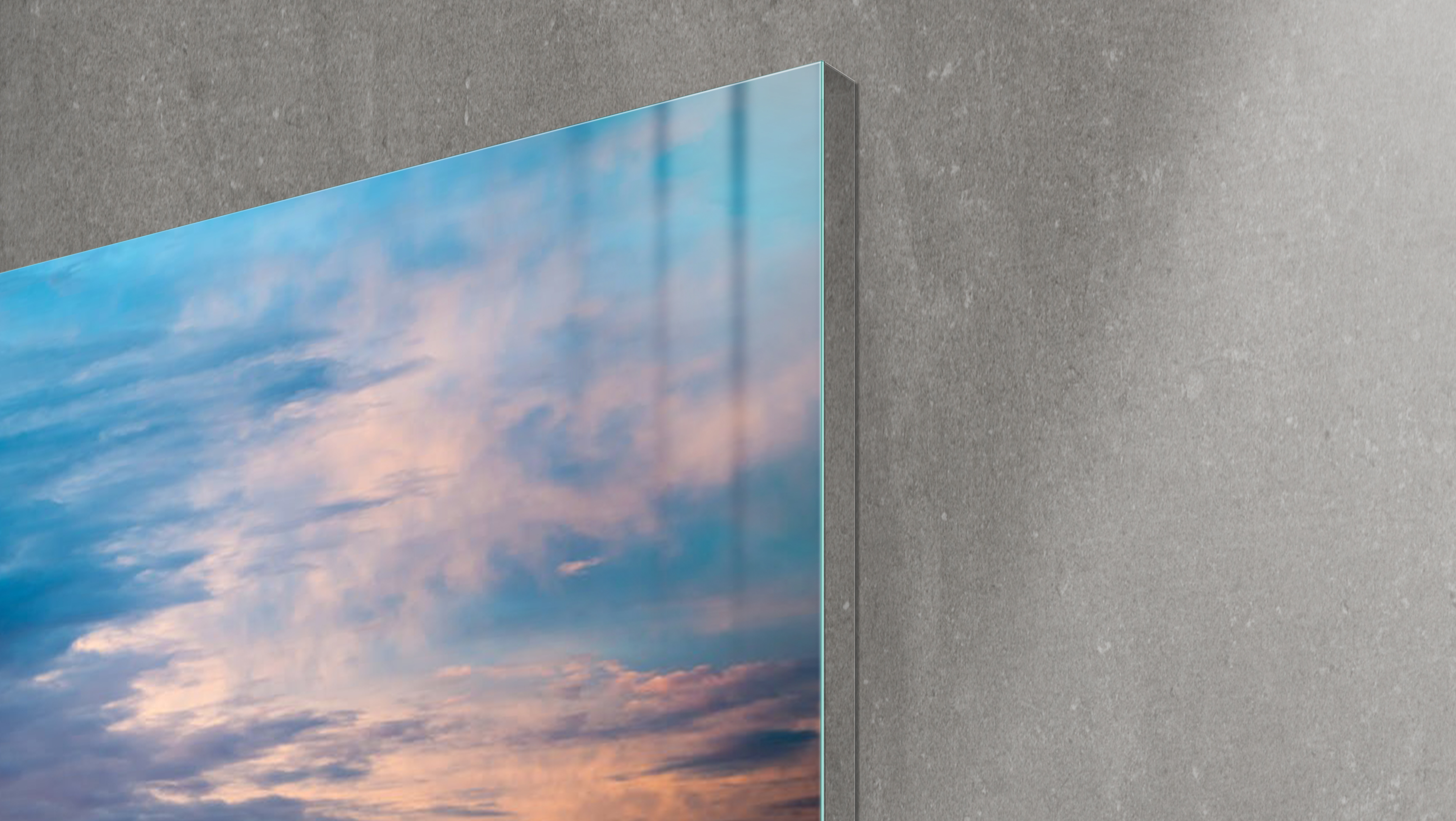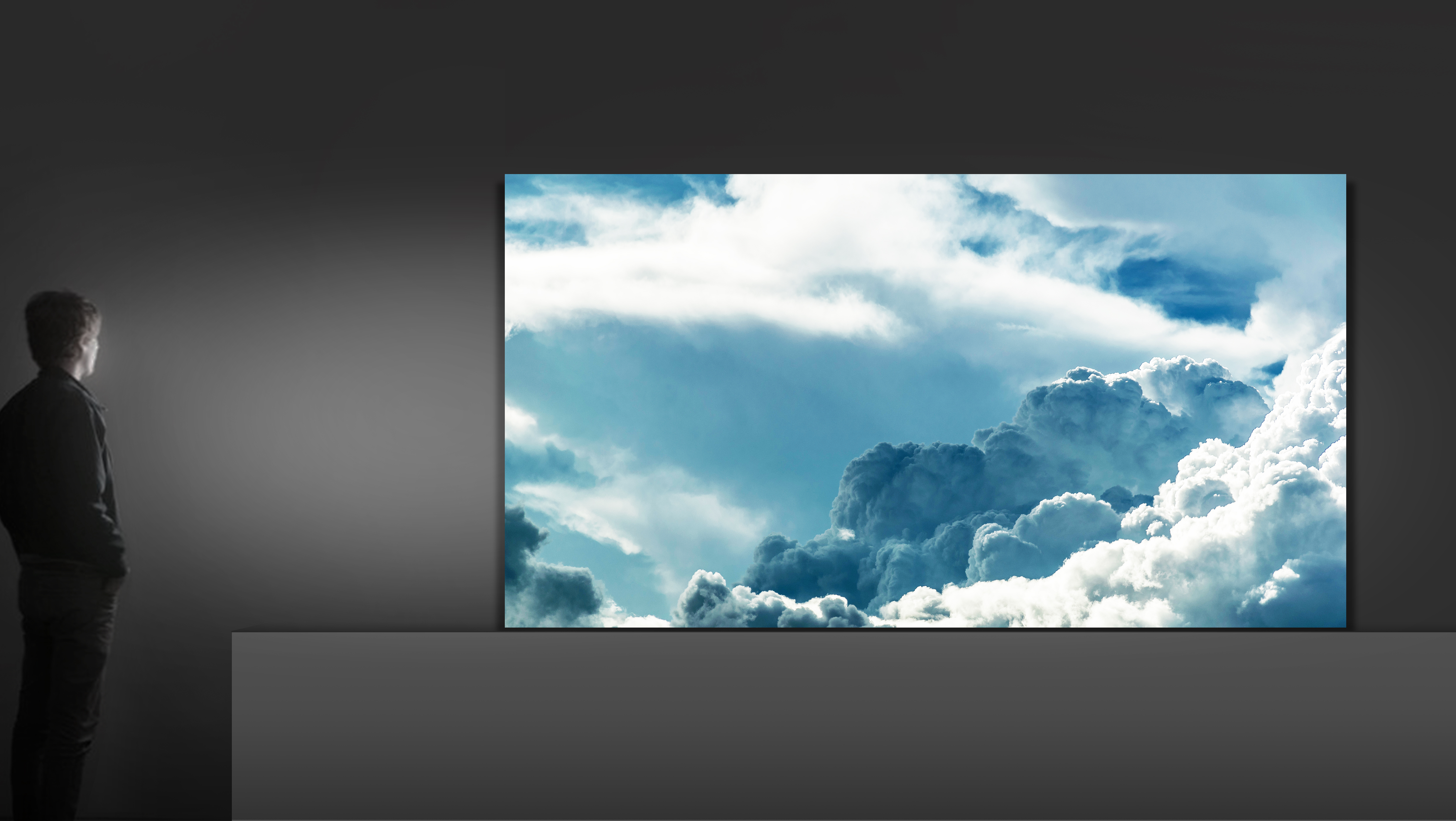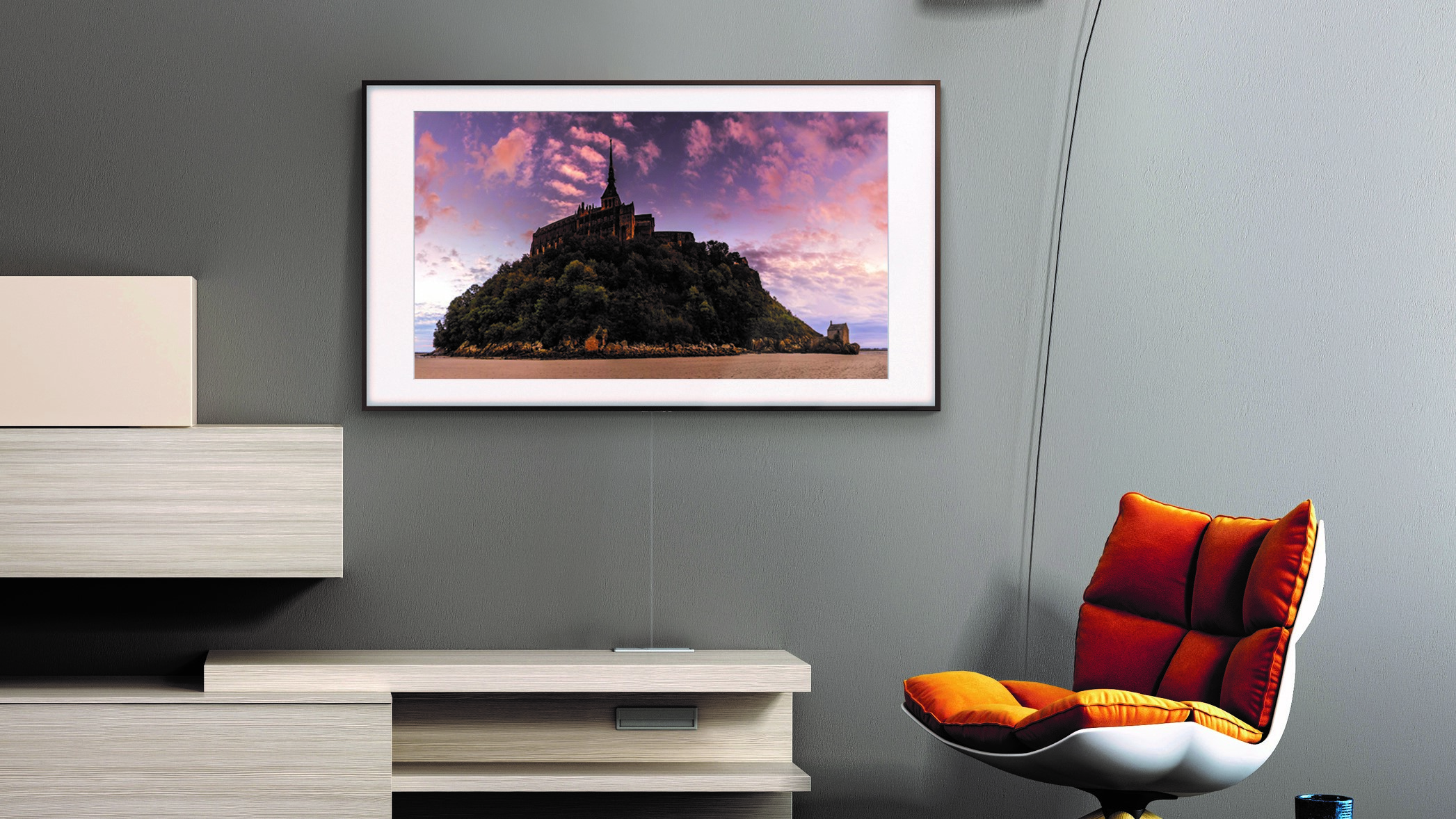Your next smart TV could be modular, says Sony exec – here’s why
Could modular TVs be a workaround for ever-larger screens?

First, we had giant television boxes that broadcast black-and-white images into households around the United States, Europe and beyond; then we were treated to flat-screen TVs that streamed high-res color images to the delight of folks young and old all over the world. Now, though, television manufacturers are gearing up to introduce us to the next big thing: screens so giant, they might not fit on a single wall. The question is, then, can our TV screens ever become too big?
"Bigger isn't necessarily better," says Mike Fasulo, President and COO of Sony Electronics and Sony North America, over the phone. "There's some thought that needs to go into it. The dimensions of the room matter, where you're viewing it from matters and the quality of the components that are put into the TV, which is basically a piece of glass, makes a difference."
Those thoughts are echoed by Angela Dirks, a New York City-based architect accustomed to dealing with all sorts of screens when working on a project. "The bigger the television, the bigger the space needs to be," she says, mentioning flat-screens as more desirable objects when decorating a room compared to old-time, large, tapered TV boxes.
"Flatscreens are a great leap forward in design because TVs used to be super cumbersome and you had to deal with them and how ugly they were but, now, TVs are so flat that they're much less conspicuous and they take up much less room," she explains. "In terms of where you position the TV, it usually has to do with the seating arrangement and the viewing. There is some math to be done around the size of the TV and how far away you should be from it to see it."
That math goes as follows: a TV should ideally be placed about 1.5 to 2.5 times the screen measure away from the piece of furniture facing it (so a 40-inch TV demands between 5 and 8.3 feet between it and a sofa). In terms of height, it should be at eye-level.

When the TV comes first
Among the mistakes usually committed by TV buyers: positioning the product way too high on a wall, forcing viewers to strain their necks when watching. The overall setup of a room equipped with a television is cause of concern for interior designers.
“People put their TV in their living space and [then place] all the furniture oriented towards it,” says Dirks. “There’s no furniture oriented in a way that will lead to people having conversations and looking at each other.” Now imagine a screen larger than the now-average 55-inch televisions found in most homes: a family den might end up becoming a cinema.
Sign up for breaking news, reviews, opinion, top tech deals, and more.
Fasulo and his team don’t see this as a problem as such, but a new way of operating that sheds light on the importance that the TV as an object has garnered throughout the years. Being able to potentially make screens bigger – and doing so in ways both flexible and high-tech – will, according to Fasulo, cater to consumers in exciting new ways.
“A decade ago, TVs were really single-purpose utilities,” says the Sony executive. “And, frankly, we hid them. We built cabinets around them and tried to hide them. Today, they’re essential and they’re an essential, integrated part of the home. That’s a gateway to access not only content but Internet and social and art and design.”
Dirks agrees: "I would say that the flatter televisions are a godsend for interior design because those old bulky TVs used to be such [a pain]," she says. "If you talk to older interior designers they'll tell you how much they hated televisions because they could never conceal them and they wanted to just toss them out the window!”
With thin TVs, though, we’re told there are a lot more design opportunities.

The problem with bigger, better televisions
As we turn TVs into centerpieces of our homes and draw even more attention to them, we’re indirectly asking companies to create bigger, more striking objects to display. But that process might lead to logistical problems, starting with shipping.
When dealing with a 98-inch screen – one of the largest sizes currently available in the consumer market – shipping costs and methods become issues to deal with. “Shipping keeps us up at night,” says Fasulo, going on to say that, although the objects have gotten lighter (which brings costs down), they’ve become more fragile. “So we are constantly working on our packaging to make sure that they don’t get damaged, which is a challenge. I think the supply chain is getting better at understanding how many steps it needs to go through and try to abbreviate them.”
One possible solution is already on the market, albeit not yet widely distributed: modular TV screens, which could potentially tackle a myriad of issues that large flat-screens have had to contend with.
Quite literally screen tiles, the objects would solve part of the shipping problem (the smaller the tiles, the easier to wrap and safely mail out), cater to consumers’ desire to invest in larger screens and, interestingly enough, free interior designers from the shackles of standard objects: modular in nature, the TVs would look seamless when properly installed and allow for far more flexibility in design.
“There are gimmicks that come out every now and again that are cool but probably will not ever happen,” says Fasulo, but TV tiles don’t seem to fall into that category. “While it looks seamless when visualized, it’s a lot of tiles of various sizes, and the current technology is very far advanced. In the future, I see it becoming even more advanced.”

Picture a multitude of pieces of glass that could be purchased in bulk or singularly and set up in any which way on a wall. The invention could ideally allow customers to smoothly change the size of a TV screen in any given room while redecorating, even turning a standard 55-inch television, for example, into a giant 300-inch panel that takes up an entire wall.
It's something we're already seeing from The Wall by Samsung, made from Samsung's modular MicroLED technology, with sizes up to 292 inches you can bring into your home.
As of now – partially due to their high cost – although there are high hopes surrounding their ability to revolutionize home design, the modular panels have mostly been utilized for retail.
“I’ll give you an example,” Fasulo says excitedly. “Think of a car showroom: if we could fill a single, 140-inch wall with 360-degree interactive visuals of the latest and greatest automobiles from that brand to let you virtually get inside, spin it and experience something very cool, that’s going to motivate the consumer [to buy] the product, of course.”
Or, perhaps, TVs-in-pieces might become more than vessels for entertainment: maybe showcasing famous artworks when left idle (as Samsung's The Frame) or family photographs when not used for streaming TV shows and films.

Rolling towards the future
The modular invention isn’t the only large-format product currently on the market, either. LG's rollable OLED TV when it was first shown off in 2019. Expected to cost up to $60,000 (around £47,000 / AU$82,000) for a 65-inch screen, the thin television rolls into a box that doubles as a soundbar when not in use.
Although a clear leap forward in terms of design, the product isn't as easily shippable as the modular invention and, obviously, not as easily concealable as a flat-screen hidden behind a sliding panel or cabinet: you’ll need this placed on a floor or counter. That being said, there’s something to the variety in form factor. While Fasulo vocally supports modular screens, and isn’t at liberty to discuss any yet-to-be-announced Sony products, he does acknowledge that large displays – even in the format of roll-up TVs – are certainly "a trend that will continue."
When analyzing relatively new products based on their larger-than-standard size, we’d be remiss not to also mention the Beovision Harmony OLED.

Available in 65-, 77- or 88-inch displays (4K resolution for the first two sizes, and 8K resolution for the third), the TV is as visually stunning in form as it is in function, being designed with "mid-century entertainment cabinets that hide the TV behind delicate blinds" in mind. The cost of what is arguably the most beautifully conceptualized large-format TV out there? A mere $16,600 / £12,900 (around AU$22,700).
Finally, although not strictly falling into the realm of ‘classic’ TV screens, modern projectors – like LG's latest CineBeam model, the HU810P – are quite adept at satisfying a viewer’s desire for grandness, effectively turning any room they're placed in into an at-home cinema beaming from a 4K laser projector that allows for flexibility in size. In the case of this particular LG model, the projection can vary between a small 40-inch projection and a massive 300-inch one.
The possibilities are, clearly, almost endless: whether looking for grandeur, flexibility, thinness, sleekness or any combination of the above, there are a mix of solutions to the issue of larger screens in the works. When considering how big TV screens can actually get, it looks like there isn’t yet a clear limit in sight.
- Next-gen TVs: the OLED, micro-LED and holographic TVs of the future